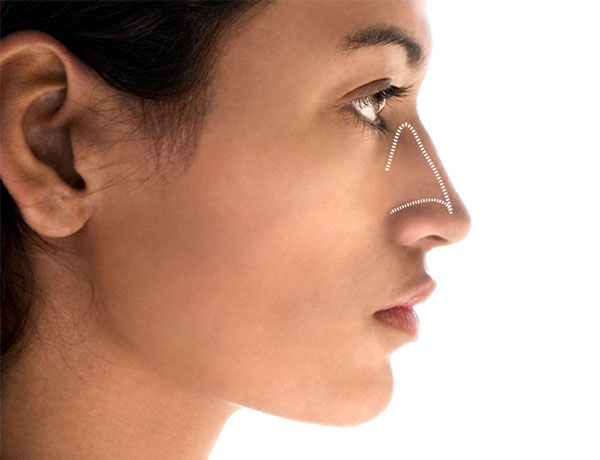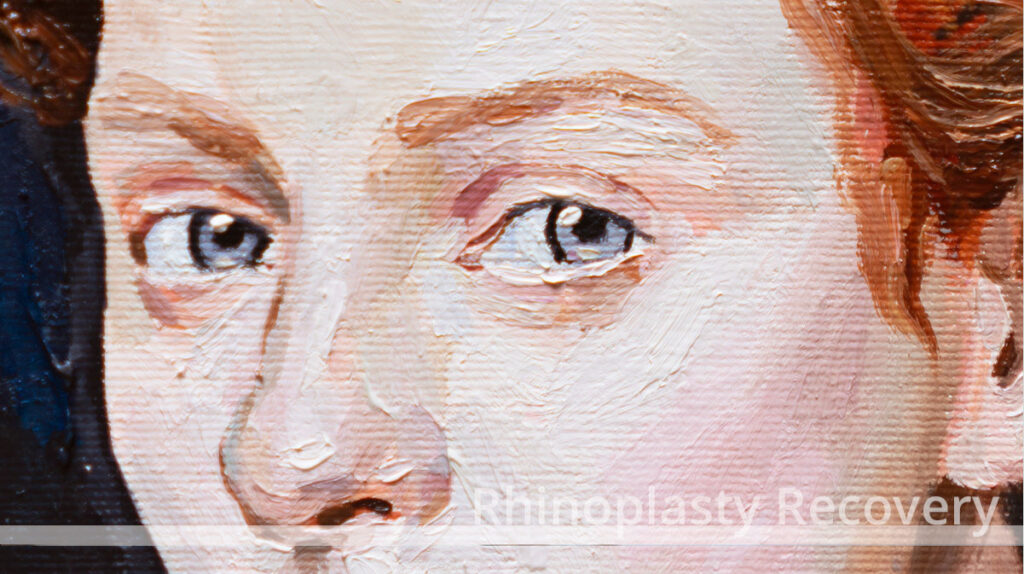Depending on the amount of work to be done, rhinoplasty is a complex procedure that requires the utmost precision, patience, and skill. However, predicting a specific rhinoplasty recovery timeline can be difficult even for the most experienced facial plastic surgeon. Recovery timelines and experiences generally vary from one patient to another, but there are a few things that you can do to ease the process as much as possible.
Keep reading for some useful rhinoplasty recovery tips to facilitate your healing process.

"*" indicates required fields
How Long Does It Take to Fully Recover from Rhinoplasty?
On average, it takes about a full year to completely recover from a rhinoplasty or nose reshaping procedure. As long as you do everything you can to maintain optimal health and take good care of your nose during this time, you might even be able to minimize the recovery time.
To give you a better idea of what to expect during your rhinoplasty recovery period, here’s a weekly breakdown of the timeline:
- Week 1: Your facial plastic surgeon will examine your nose and most likely remove your splint. During this time, you may notice some minor bruising around the eyes, but otherwise you should be able to resume your normal activities. Just be mindful of everything you do, how much sun exposure you get, and don’t put any pressure on your face or lift heavy objects.
- Week 2: Most of the facial bruising and swelling should have subsided by now.
- Weeks 3 and 4: If you work out, at this point you can resume cardiovascular exercises.
- Week 6: Resistance workouts and strength training can be resumed at this time as the bones should be stable. But be sure to consult with your facial plastic surgeon and general physician before resuming strenuous physical activities.
- 3 to 6 Months: Numbness and abnormal skin sensations around your nose should be completely gone by this point.
- One year: By this point, the healing process should be complete, give or take a few weeks or months. You shouldn’t experience any swelling, bruising, discomfort, redness, or pain at this point. Also, you should be able to see the full results of your rhinoplasty. Consult with your facial plastic surgeon immediately if you notice any abnormal side effects.
Tips for Facilitating the Rhinoplasty Recovery Time
Following these important tips throughout the recovery period will help facilitate your recovery and keep it fully on track.
Follow Your Doctor’s Instructions
You can read all of the online articles you want about what to expect during the recovery period and what you should do, but the best piece of advice you can take is to just follow your doctor’s instructions and book follow-up consultations regularly. Your facial plastic surgeon knows your case history in detail and since they’re the one who performed the procedure, they should be able to aptly help you through the recovery process and prescribe the appropriate medications.
Watch out for Certain Side Effects
Immediately following your nose reshaping procedure, you may notice a few different side effects like redness or slight bruising under the eyes. This should subside within the first two weeks, but if it persists, then you should consult with your facial plastic surgeon. In the beginning, you may also feel a little discomfort or soreness but this should also subside in the coming weeks. If you feel intense discomfort or pain to the point where you can’t return to your regular activities, then you should let your doctor know.
Keep Your Head Elevated
For the first little while, it’s extremely important that you keep your head elevated in a straight upright position as much as possible to facilitate proper blood flow and prevent further injury. Unfortunately, this means that for the first six weeks or so post-surgery, you’ll have to sleep in an upright position and avoid turning onto your back or sides as this could displace your nose, which is still healing.
Reduce Swelling with a Cold Compress
During the first 2-3 days following surgery, you should apply a cold compress to your face to help reduce the swelling and redness. Be careful not to press the cold compress directly to your nose as this will put it out of place. Apply it to your cheeks instead and avoid touching your nose altogether.
Maintain a Healthy Diet
As always, it’s important to maintain a healthy diet, especially when you’re recovering from a major or minor surgery. Eat nutritious foods that are rich in vitamin C, vitamin D, protein, calcium, and that have anti-inflammatory properties to help keep swelling down and assist with the healing process.
Avoid Blowing Your Nose
This may seem pretty obvious, but it bears repeating. Avoid blowing your nose at all costs for the first six weeks or so following your rhinoplasty procedure. During this time, you’re going to experience a lot of congestion due to blockages in your nasal passage while your nose is healing. Do not blow your nose. Instead, talk to your doctor about using saline-based nasal sprays to help clear up the congestion and mucus buildup. On that note, you should also avoid any direct physical contact with your nose whatsoever for the first six weeks and this includes wearing sunglasses, face masks, and even scratching an itch. Even the smallest point of contact can cause injury.
When Is a Nose Cast Necessary for Rhinoplasty Recovery?
Not all rhinoplasty patients are required to wear a nose cast during the recovery period. Nose casts are only necessary in cases where the patient’s nasal bone structure is broken and reshaped. In this case, you may need to wear a splint or nose cast for at least 7-10 days or longer depending on your doctor’s recommendation. The nose cast will hold your newly formed nasal bone structure in place until it’s strong enough to hold its shape on its own.
You can trust Dr. Gantous at Toronto Facial Plastic Surgery to perform your rhinoplasty procedure for you. He’s worked with numerous clients in the past to help them achieve their ideal facial symmetry and he can help you too. Contact us today to schedule your preliminary consultation!
